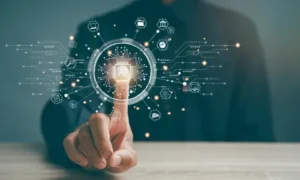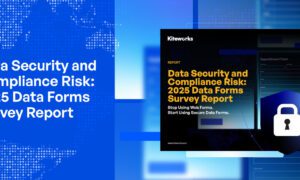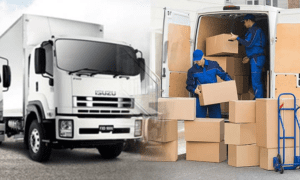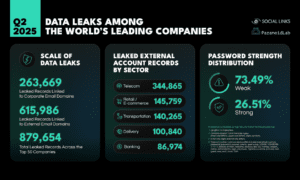Cities are changing faster than ever. With rising populations, greater demands for services, and the push toward sustainability, modern urban centers need creative solutions. Technology has become the backbone of these changes, and among the most exciting innovations is the use of drones.
Once seen only as tools for photography or military use, drones are now key players in the growth of smart cities. They bring speed, accuracy, and efficiency in ways that reshape how cities operate. If you want to see how the skies above us are becoming part of daily life, keep reading to discover the growing role of drones in our modern cities.
The Rise of Smart Cities
A smart city is more than just a place filled with devices. It is a system where technology is used to improve services, reduce waste, and create safer and healthier living spaces. Sensors, data networks, and automated systems work together to monitor and respond to the needs of the population.
From energy grids that adjust in real time to traffic lights that adapt to rush hour, the goal is to make cities run smoothly. Drones add a new layer to this system, offering eyes in the sky and a fast way to collect and deliver information.
Drones in Infrastructure and Maintenance
Maintaining city infrastructure has always been a challenge. Bridges, roads, and buildings require regular checks to ensure safety. Traditionally, this meant sending out teams of workers, which was time-consuming and sometimes dangerous.
Drones now provide a safer and faster option. Equipped with cameras and sensors, they can fly around bridges to check for cracks, hover above power lines to detect faults, or scan rooftops for signs of wear. By spotting problems early, cities can prevent accidents and save money on costly repairs.
Enhancing Traffic Management
Traffic is one of the greatest struggles of urban life. Congested roads lead to wasted time, pollution, and stress. Drones are now being used to monitor traffic patterns in real time. From above, they can spot bottlenecks, accidents, or areas where flow is slowing down.
Public Safety and Emergency Response
In times of crisis, speed is everything. Drones have proven to be valuable in emergencies such as fires, floods, and accidents. They can reach areas that are hard for rescue teams to access, sending back live footage to guide responders.
In firefighting, drones provide aerial views of burning buildings, showing hotspots and helping crews plan their strategy. During floods, they map out safe paths for evacuation.
Environmental Monitoring
Smart cities aim to be not just efficient, but also sustainable. This means keeping track of air quality, water supplies, and green spaces. Drones make this work easier by carrying sensors that measure pollution levels, detect illegal dumping, or track changes in forests and rivers.
Delivery and Logistics in Urban Areas
The way we receive goods is also changing. With the rise of online shopping, cities face more traffic from delivery trucks, leading to congestion and pollution. Drones provide an alternative for urgent deliveries.
Medicines, food, and essential supplies can be flown directly to homes or hospitals, bypassing traffic and reaching destinations faster. Companies are already testing delivery drones in several cities, showing how the future of logistics may shift from roads to the skies.
Drones and Law Enforcement
Public safety also includes law enforcement. Police departments are exploring how drones can support their work. From monitoring large events to tracking suspects in open areas, drones provide real-time intelligence without putting officers at risk.
The Role of Advanced Models
Not all drones are created equal. Some are designed for simple hobby use, while others carry advanced sensors, thermal cameras, and strong batteries that allow them to stay in the air longer. In city planning and safety, these advanced drones are critical.
A model like the DJI Matrice 4T, for example, is built to handle complex missions, from inspecting power lines to aiding emergency crews. These machines show how far drone technology has come, proving they are more than toys-they are powerful tools for city development.
Addressing Privacy and Security Concerns
As drones become more common, concerns about privacy and security grow. People worry about being watched without consent or data being misused. Smart cities must create clear rules to protect residents while still allowing drones to serve their purpose.
This means laws that set limits on where drones can fly, how data is stored, and who can access it. Security is also a concern, as drones connected to networks could be hacked. Strong cybersecurity and transparent policies are essential for building trust between the public and drone programs.
Building a Connected Future
The role of drones is not limited to single tasks. In smart cities, they will integrate into a larger network of systems. Imagine drones working with traffic sensors, energy grids, and public health systems all at once.
A drone could scan air quality, report data to the city’s systems, and trigger changes in traffic or industrial activity to reduce pollution. This connected future shows how drones will not just gather data, but actively shape the flow of urban life.
Preparing the Workforce for Change
As drones take on larger roles, cities will also need skilled people to operate, maintain, and manage them. Training programs will become essential for pilots, engineers, and data analysts.
Schools and universities are already adding courses in drone technology. For cities, this means not only gaining a tool but also creating new jobs and industries. The growth of drones is tied closely to the growth of opportunities for workers.
The Global Outlook for Drones in Cities
Different countries are adopting drones at different speeds. Some cities are already running pilot programs for drone deliveries, while others focus on safety and surveillance. As technology advances and costs drop, more cities will bring drones into daily use.
Final Thoughts on Drones in Smart Cities
The role of drones in modern cities is still growing, but the direction is clear. From monitoring traffic to saving lives in emergencies, drones are proving their value. They are becoming vital tools for creating safer, smarter, and more sustainable spaces.
A Sky Full of Possibilities
The future of urban life will not only be built on roads and buildings-it will also take shape in the skies. Drones are opening a new dimension of city living, one where efficiency, safety, and sustainability work hand in hand. With careful planning and responsible use, the drone-powered city is not just a dream-it is the future waiting above us.
For more on this content, visit the rest of our blog!



































